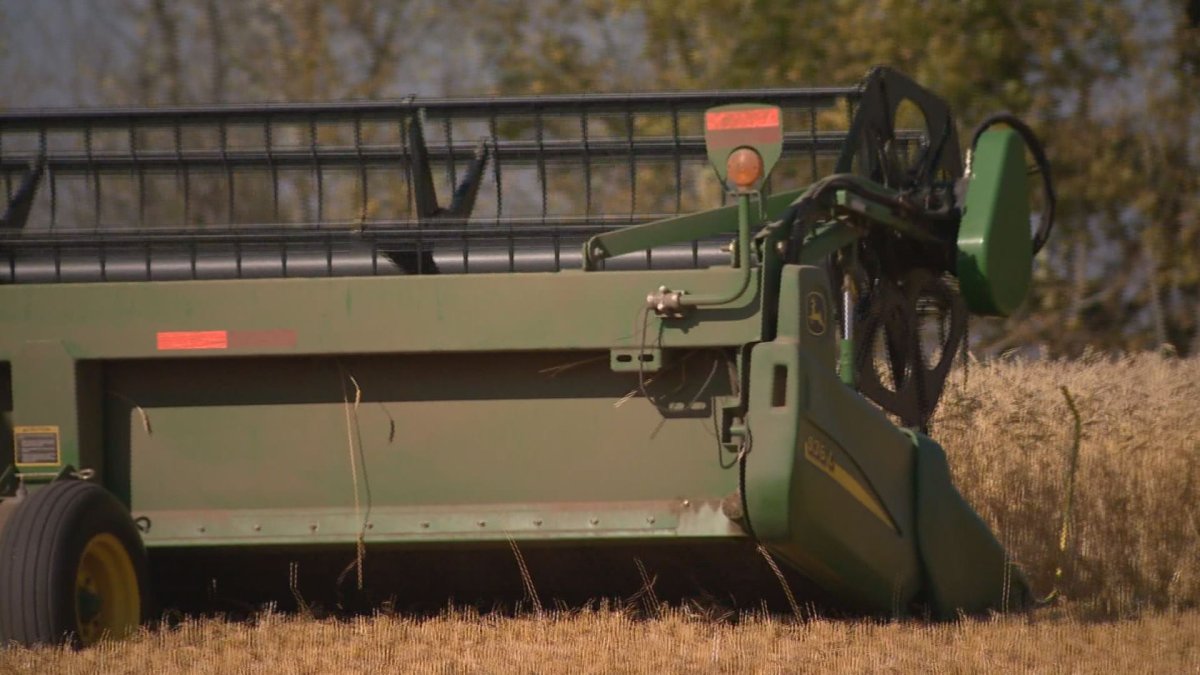More rain is needed to help Saskatchewan break out of its current drought conditions.

Rain, at times heavy, in the past week slowed harvest operations, but has helped with the hot, dry conditions that have gripped the province, Saskatchewan Agriculture reported Thursday in the crop report.
Sask Ag said it will result in a downgrade of crops still in the field, but will benefit pastures and hopefully allow those to regrow for 2022.
Cropland topsoil moisture is now rated one per cent surplus,32 per cent adequate, 37 per cent short and 30 per cent very short.
Hay and pasture land topsoil moisture are rated 23 per cent adequate, 34 per cent short and 42 per cent very short.
Provincially, pasture conditions are rated one per cent good, 15 per cent fair, 46 per cent poor and 38 per cent very poor.
Significant rain, and in some cases, hail, was reported throughout the province.
The Grenfell area received 97 mm of rain, followed by the Moose Jaw area with 77 mm. Other areas receiving significant rainfall were Vanguard, Jedburgh, Harris and Netherhill.
A tornado was reported in the Hodgeville area, causing damage to one farm.
Sask Ag said the harvest did progress in the past week despite the rain and cooler weather, with 29 per cent of the crop now in the bin. That is ahead of the five-year average of 12 per cent for this time of year.
Another 21 per cent of the crop is swathed or ready to straight-cut, ahead of the five-year average of 16 per cent.
Harvest is furthest along in the southwest, with 43 per cent of the crop combined.
The southwest is 43 per cent combined, the southeast 30 per cent, the west-central 27 per cent, the east-central 22 per cent, the northeast 25 per cent and the northwest 15 per cent.
Overall, 93 per cent of winter wheat, 78 per cent of fall rye, 76 per cent of lentils, 81 per cent of field peas, 42 per cent of barley, 31 per cent of durum, 23 per cent of oats, 25 per cent of spring wheat and six per cent of canola is combined.
An additional 30 per cent of canola is swathed or ready to straight-cut.
Sask Ag crops extension specialist Matt Struthers says in a perfect world, an extended period of sunshine would be needed to dry off crops. Recent rainfall, in some areas, has caused the topsoil to be over-saturated.
“What I would like to see happen in the forecast — which is sadly not what they are predicting — is some warm, sunny days to dry the crops up, get the combines in the fields and get this harvest over with as quickly as we can,” Struthers said.
“It’s been a weird harvest year.”
Relief measures
A number of relief measures have been announced weeks for producers affected by the drought.
An AgriRecovery program will provide a per-head payment to livestock producers to help maintain female breeding stock.
The province said details and information on how to apply are being finalized.
The Saskatchewan Crop Insurance Corp. is doubling the low yield appraisal threshold values for its customers who salvage their cereal or pulse crops as feed, without negatively impacting future individual coverage.
SCIC said customers should contact their local office first to discuss options before they graze, bale or silage any damaged crops.
The Saskatchewan government said it is providing relief to livestock producers by temporarily increasing the maximum funding from the Farm and Ranch Water Infrastructure program to $150,000 from $50,000.
The program is for dugouts, wells and pipelines for agriculture use, with the first $50,000 based on a 50-50 cost share and the remaining $100,000 on a 70-30 government-producer cost share.
More information on the program is available by contacting the Agriculture Knowledge Centre at 1-866-457-2377.
The federal and provincial governments have also increased the 2021 AgriStability interim benefit payment percentage from 50 per cent to 75 per cent for Saskatchewan producers.
The interim benefit provides the opportunity for producers enrolled in AgriStability to access a portion of their benefit early, to help support losses and cover costs.
Farmers stress line
Sask Ag said the Farmers Stress Line is available 24 hours a day for any needed support at 1-800-677-4442.
The service is run by Mobile Crisis Services Regina and all calls are confidential.
—WIth files from Brady Ratzlaff



Comments